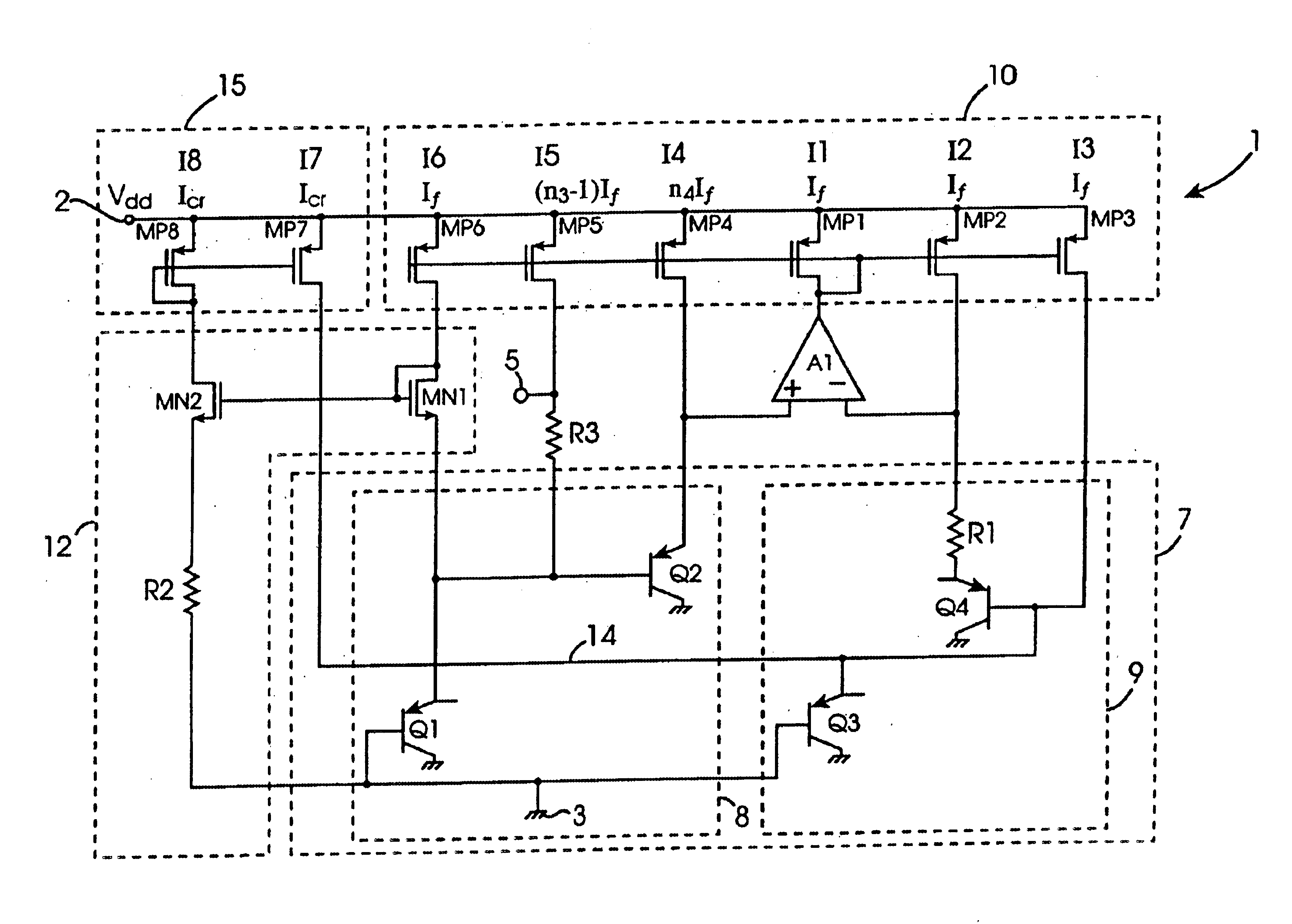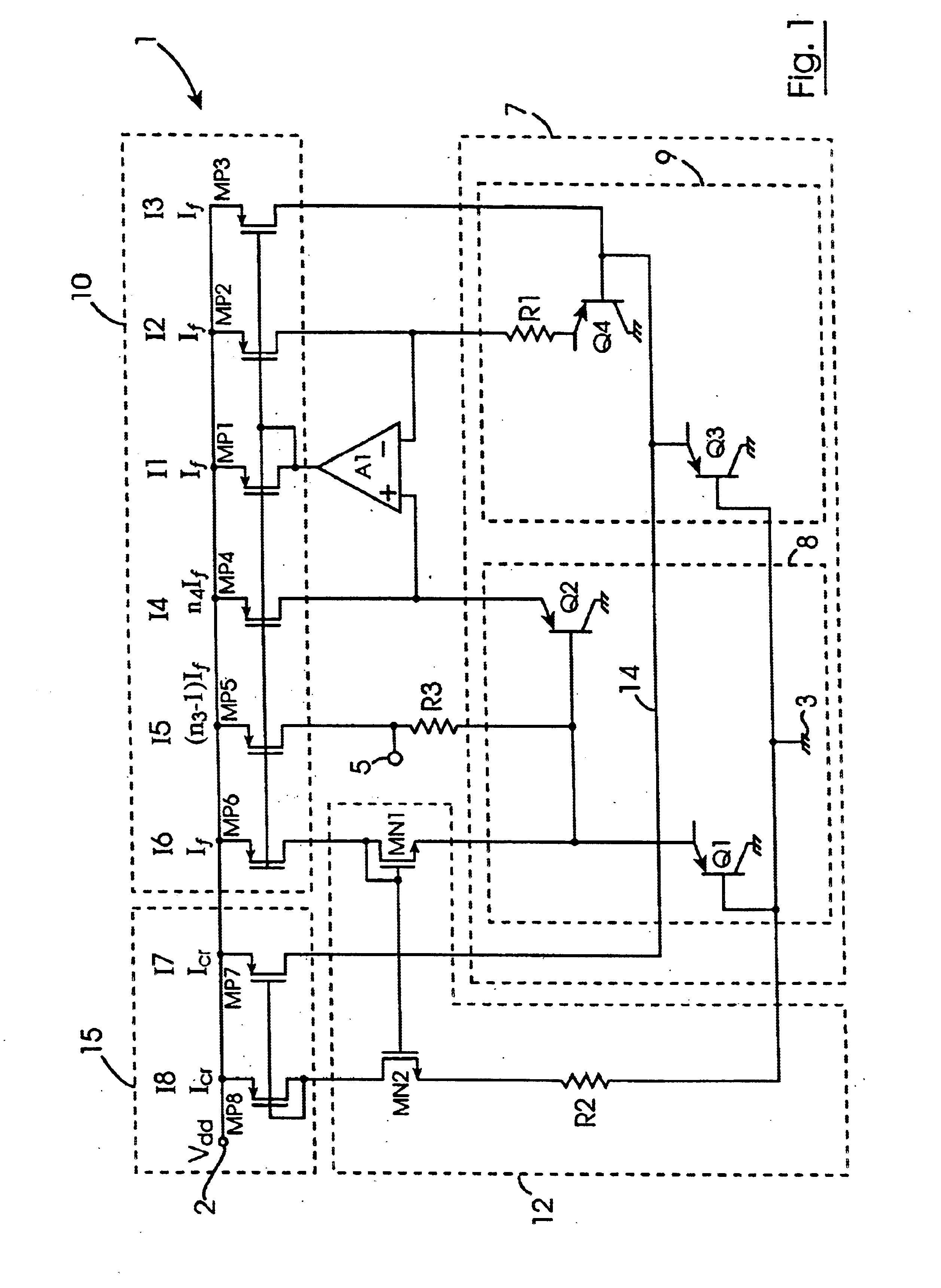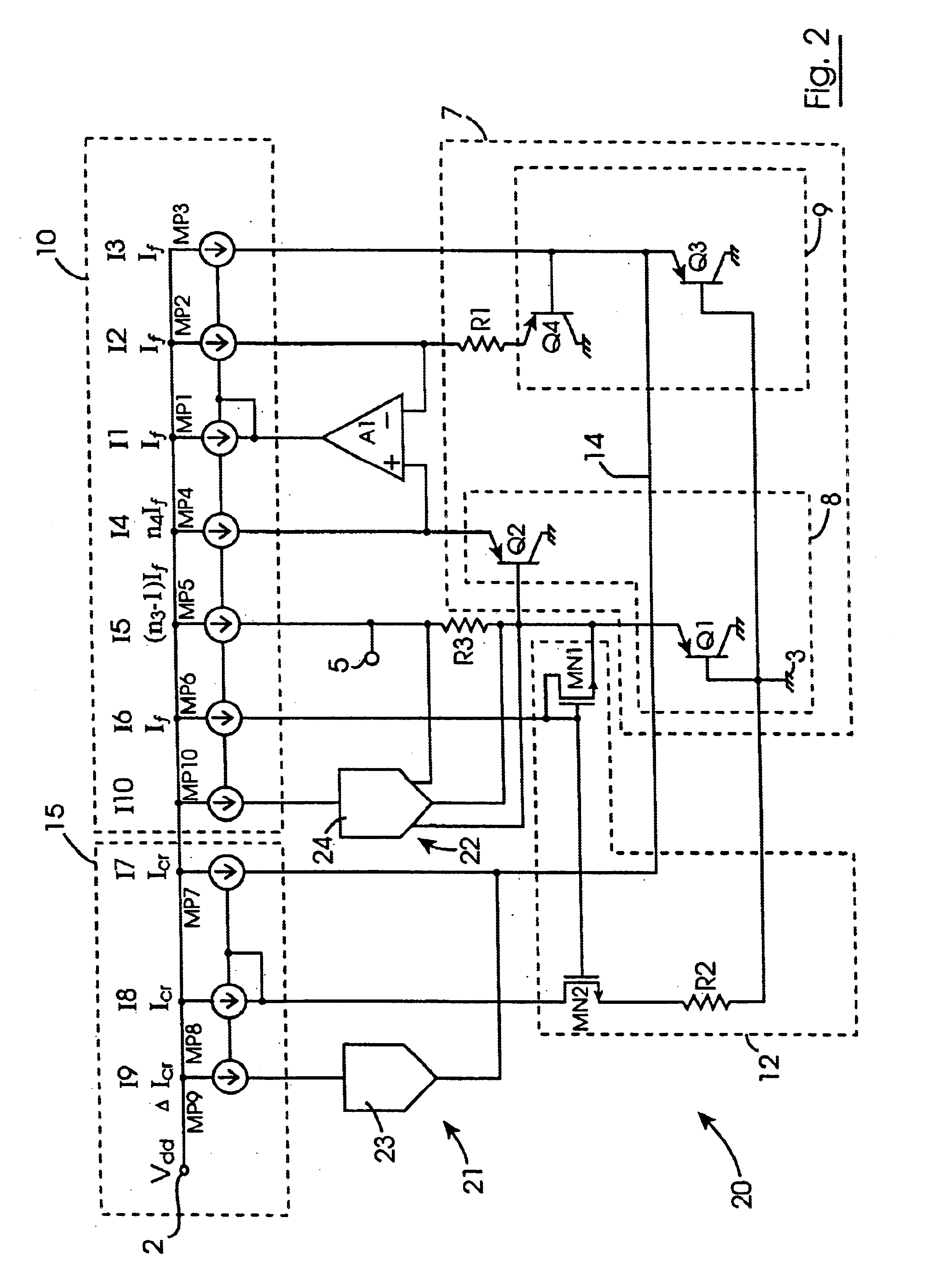Bandgap voltage reference circuit and method for producing a temperature curvature corrected voltage reference
- Summary
- Abstract
- Description
- Claims
- Application Information
AI Technical Summary
Benefits of technology
Problems solved by technology
Method used
Image
Examples
Embodiment Construction
Referring to the drawings and initially to FIG. 1 there is illustrated a bandgap voltage reference circuit according to the invention indicated generally by the reference numeral 1 for providing a temperature stable DC voltage reference output with TlnT temperature curvature correction. The voltage reference circuit 1 is implemented as an integrated circuit on a silicon chip by a CMOS process. The voltage reference circuit 1 is supplied with a supply voltage V.sub.dd on a supply rail 2, and the voltage reference circuit 1 is grounded at 3. The temperature stable TlnT temperature curvature corrected voltage reference is developed between an output terminal 5 and ground 3.
The voltage reference circuit 1 comprises a bandgap cell 7, which comprises a first transistor stack 8 comprising two stacked transistors, namely, two first bipolar transistors Q1 and Q2, and a second transistor stack 9 comprising two stacked transistors, namely, two second bipolar transistors Q3 and Q4. The first an...
PUM
 Login to View More
Login to View More Abstract
Description
Claims
Application Information
 Login to View More
Login to View More - R&D
- Intellectual Property
- Life Sciences
- Materials
- Tech Scout
- Unparalleled Data Quality
- Higher Quality Content
- 60% Fewer Hallucinations
Browse by: Latest US Patents, China's latest patents, Technical Efficacy Thesaurus, Application Domain, Technology Topic, Popular Technical Reports.
© 2025 PatSnap. All rights reserved.Legal|Privacy policy|Modern Slavery Act Transparency Statement|Sitemap|About US| Contact US: help@patsnap.com



